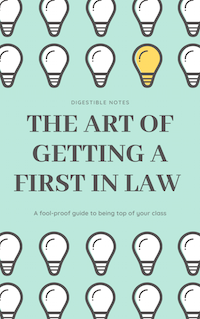Burglary
Introduction
⇒ Section 9 of the Theft Act 1968 defines the offence of burglary. It is important to appreciate there are two different kinds of burglary:
1. Section 9(1)(a): entering a building or part of a building as a trespasser with an intent to commit one of the following in the building:
- theft;
- criminal damage; or
- infliction of grievous bodily harm;
2. Section 9(1)(b): having entered a building or part of a building as a trespasser, committing either:
- theft or attempted theft; or
- infliction or attempted infliction of grievous bodily harm.
⇒ The key difference between the two offences is the time at which the crime is committed:
- Section 9(1)(a) is committed when the defendant enters the building.
- Section 9(1)(b) is committed when, once inside the building, the defendant commits one of the listed crimes.
Building or part of a building
Summary
⇒ A building must involve a permanent structure.
- Section 9(4) of the Theft Act 1968 states that an inhabited vehicle isincluded within the definition of a building. This is designed to cover houseboats and caravans which are permanently inhabited.
⇒ If the defendant enters a building with the consent of the owner, but then enters part of the building which he is not permitted to enter with intent to steal, he or she can be guilty of burglary.
Entry
Summary
⇒ The burglar must 'enter' the building to be guilty of burglary, but this does not mean that the burglar's body must enter the building.
⇒ According to the Court of Appeal in R v Brown [1985] there must be 'effective entry'.
- In the case, the defendant broke a shop window and stick the top half of his body through it while investigating the inside of the shop. This as an effective entry so the offence was made out.
- The Court of Appeal in R v Ryan [1996] rejected an argument that the test should be whether there was a sufficient amount og the defendant's body inside to enable him or her to carry out one of the crimes.
⇒ It is widely accepted that it is possible to commit a burglary by using an object to enter the property, although there is no recent authority on the issue e.g. using a pole to pull out an item from a building.
Trespass
Summary
⇒ The defendant must enter as a trespasser, being aware that he or she is a trespasser.
⇒ If someone enters a piece of land he or she does not own without legal authorisation then prima facie he or she is a trespasser.
⇒ See the case of R v Collins [1973] where the key issues was whether the owner's daughter had invited the defendant into the house before he had entered. If she had he could not be convicted of burglary because he was not a trespasser.
The Art of Getting a First in Law - ONLY £4.99
FOOL-PROOF methods of obtaining top grades
SECRETS your professors won't tell you and your peers don't know
INSIDER TIPS and tricks so you can spend less time studying and land the perfect job
We work really hard to provide you with incredible law notes for free...
The proceeds of this eBook helps us to run the site and keep the service FREE!

Withdrawal of permission
⇒ If you have permission to enter someone's house, but that permission is later withdrawn and you are asked to leave, you are a trespasser unless you leave with a reasonable length of time.
⇒ However, to be guilty of burglary a person has to enter as a burglar → so if you leave slowly and decided to steal something on the way you there is no burglary (only theft).
Acting in excess of permission
⇒ More difficult issues arise where the defendant has been given permission to enter a house for a particular purpose (e.g. to read a gas meter), but acts in excess of this permission (e.g. entering a bedroom).
- He or she is than trespassing and so can be convicted of burglary.
Consent to enter based on a mistake
⇒ An example of this was R v Collins [1973], where the daughter gave consent to the defendant to enter on the assumption that he was her boyfriend.
⇒ The general position is that if consent is provided following a fundamental mistake (e.g. identity of the individual) then the consent is invalid, but if the mistake is not fundamental (e.g. mistake of an irrelvant matter) then consent may still be valid.
- However, it should be recalled that it must be shown that the defendant know he or she was a trespasser.
- So in R v Collins [1973], the defendant honestly believed he was being invited in, so he lacked the mens rea element because he did not know he was a trespasser.
The mens rea of a trespasser
⇒ To be guilty of trespass the defendant must known that they are a trespasser or be reckless.
⇒ See the case of R v Jones & Smith [1976].
The mens rea of burglary
Summary
⇒ Under section 9(1)(a) of the Theft Act 1968 it must be show that the defendant had an intention to commit one of the listed offences at the time the defendant entered the building.
- It should be noted that if the defendant entered the building intending to steal, but once inside decided not to steal, the offence was still committed.
- Likewise, if the defendant entered the building not intending to commit theft, but once inside decideds to do so, there would be no burglary.
⇒ Under section 9(1)(b) of the Theft Act 1968 the mens rea of burglary under section 9(1)(b) of the Theft Act 1968 is the mens rea for stealing.
Law Application Masterclass - ONLY £9.99
Learn how to effortlessly land vacation schemes, training contracts, and pupillages by making your law applications awesome. This eBook is constructed by lawyers and recruiters from the world's leading law firms and barristers' chambers.
✅ 60+ page eBook
✅ Research Methods, Success Secrets, Tips, Tricks, and more!
✅ Help keep Digestible Notes FREE

